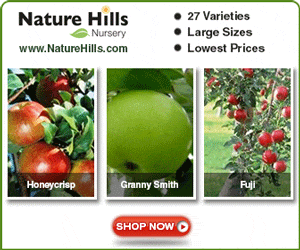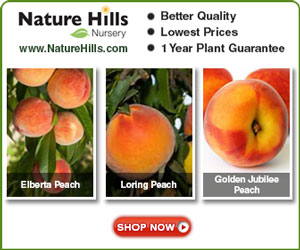Arizona Vegetable & Fruit Gardening For The Arizona Desert Environment.
Pictures, Photos, Images
Descriptions, Information, & Reviews.
Beta vulgaris.
We Are Proud Of Our SafeSurf Rating!
| Beets. Beta vulgaris. All Photos Courtesy: Wikipedia, the free encyclopedia. |
|---|
| Bundle. Beets. Beta vulgaris. | Variety. Beets. Beta vulgaris. |
|---|---|
| Sea Beets. Beta vulgaris maritima. The Original Ancestor Of Beta vulgaris. | Beet Seeds. Beta vulgaris. |
| Flowers. Sugar Beets. Beta vulgaris. The Original Ancestor Of Beta vulgaris. | Fruit. Sugar Beets. Beta vulgaris. |
| Inflorescence. Sugar Beets. Beta vulgaris. The Original Ancestor Of Beta vulgaris. | Inflorescence. Sugar Beets. Beta vulgaris. |
We Buy Our Hard To Find Fruit Trees For Yarnell Arizona At Nature Hills Nursery.
We Have Several Nice Fruit Trees Growing In Yarnell, Arizona.
They Will Do Well In Other Similar Elevations In Arizona. ie.. Prescott, Cottonwood, Camp Verde, Sedona.
Cameo & Fuji Apples! Yummm! Click The Nature Hills Nursery Link To View.
 /
/

Beets. We wish to thank Wikipedia, the free encyclopedia for some of the information, and images on our page. We share information, images, and donate to Wikipedia.
Same great flavor and canning/pickling qualities as Detroit Dark Red, but with more uniform color and shape. Deep rich red throughout, no rings or white streaks. Always sweet and rich for canning, pickling and eating fresh!. 58 DAYS.
We always had trouble with gold beets, from poor germination to weak growth to just plain old boring flavor. With Boldor all that changed! This variety jumped out of the ground and quickly formed large, dark-golden skinned beets with brilliant yellow interiors. Excellent sweet flavor is delicious when juiced, shredded or roasted, and add the young, tender leaves to your favorite salad! Retains gold color when cooked. 55 DAYS.
No need to add butter to these irresistible treats. The richest, sweetest beet we've ever tasted, Harrier is a delight to grow. Big, vigorous tops can be enjoyed steamed or in salads, while roots grow up to softball size and are still tender and delicious! Full of flavor whether enjoyed fresh from your garden, canned or pickled. 50 DAYS.
Early, round, smooth-skinned beets are exceptionally tender. Ringless and deep red�retain color through processing. 52 DAYS.
Smooth, cylindrical shape for�perfectly round slices every time. Resists bolting, won't go corky or soft if harvest is delayed. 60 DAYS.
1. Determine the last expected spring frost date for your area. Plan to plant your beets after the last frost-free date. 2. Cultivate your planting area to break up any hard soil, till down into the soil about 12 inches, keeping your rows about 12 to 24 inches apart. Beet varieties prefer well-draining, loose soils with plenty of organic matter. 3. If a soil test has not been taken, make a preplant application of 5-10-10 at the rate of 3 pounds per 100 square feet. Use a starter solution for transplants, and sidedress cautiously after the first leaves reach about the size of a dime using three tablespoons of 33-0-0 per 10 feet of row). Sidedress cautiously until a large number of beets are set. Too much nitrogen before fruit set causes all foliage. After fruit set, fertilize regularly using a complete fertilizer. Soil pH should be 5.8 to 6.5 for best growth. 4. Purchase certified beet seed from your local garden center or nursery. 5. Beets should be spaced about 1 � inches deep, 12 inches apart, in rows 12 to 24 inches apart. Cover the seeds with a layer of soil. When weeding around the beets, be careful, as the roots of the sugar beets are shallow and you can easily damage them. Select a well-drained, loamy or sandy loam soil for planting. Avoid areas that have had eggplant, tobacco, pepper or Irish potato planted in the previous year. 6. Apply a layer of organic mulch to help maintain soil temperatures and to prevent weeds from growing. Watch for sprouts to emerge from the soil. Germination will occur approximately 15 days after planting. 7. Water your beets once or twice a week when the soil feels dry to the touch. Do Not Spray Water On Your Plants. Beets has shallow root systems so they only need a light watering to maintain constant soil moisture. Water sufficiently to moisten the soil to a depth of at least 6 inches. The critical period for moisture is during leaf development. Mulching can help to provide uniform moisture, conserve water and reduce weeds. 8. Monitor your beets for disease and pest problems.Beats grown by spraying water in Arizona, often suffer from fungal diseases, which can be treated with a fungicide. Control common pests such as snails, potato tubermoth and aphids by sprinkling nontoxic diatomaceous earth around the affected beet plants. 9. Beets should be ready for harvest in about 50 to 65 days from seed. Dig up your sugar beets when they measure about two inches in diameter. If the beets are allowed to grow larger, they'll become fibrous and lose their flavor. An early harvest is vital if beets are to retain their sweet flavor.
Reduce disease problems by:
Pests Of Beets In Arizona:
Apply a Bacillus thuringiensis (Bt) based insecticide to control them.
Some of the more common diseases of beets in Arizona include bottom rot caused by Rhizoctonia solani, leaf drop caused by Sclerotinia minor and S. sclerotiorum, downy mildew caused by Bremia lactucae and powdery mildew caused by Erysiphe cichoracearum. Another major disease of beets in Arizona is big vein, which is caused by double-stranded ribonucleic acid that is presumed to be a virus-like agent. Fungicides can be effective management tools for beet diseases caused by fungi. Treat with an approved fungicide. Neem oil, sulfur, and other fungicides can be used.
Not all insects found in our gardens, & orchards are pests. Many organisms benefit the grower by eating or parasitizing pests in the orchard. These organisms are known as beneficials, natural enemies, or biological control agents. They may be native or introduced from other areas. Beneficial natural enemies (insects and mites) that may occur in our gardens, & orchards could be classified as predators or parasitoids. Predators are those that attack, kill, and feed directly on a pest (prey). Examples of common garden, or orchard predators are ladybeetles, flies, lacewings, wasps, bugs, ants, spiders, and predator mites. Parasitoids are insects that lay eggs on or in a pest (host). The developing larva lives and feeds on the host, parasitizing and eventually killing it. Examples include parasitic wasps such as the egg parasite, Trichogramma sp. Bees are a different class of beneficial insects in the garden or orchard in that they benefit the grower by aiding pollination. It is important that growers are able to recognize, identify, and conserve beneficials in their gardens, & orchards. Conservation of beneficial organisms is a basic tenet of an ecologically sound pest management strategy. Conservation or enhancement of beneficials can be achieved through judicious use of pesticides such as spraying only when and where needed, accurate timing of sprays, and selecting pesticides that are least toxic to beneficials. For Example: Many growers now place colonies of the Blue Orchard Mason bees in their orchards to pollinate their crops for maximum production.
Quick Notes:
Type: The most commonly eaten part of beets are the deep-red roots of garden beet, however the leaves are sometimes eaten.
Height: About 1 � - 2 feet tall during the first year of growth. About 4.9 - 6.6 feet tall during the second year, when flowering. Lactuca sativa is an annual glabrous herb with a thin tap root and an erect stem 30�100 cm tall, branched in the upper part.
Spread: About � - 2 feet wide.
Flowers: Fowering stalk 1.2�1.8 m tall, produced the second year from the top of the tuber; flowers small, numerous in a tall open panicle. Thay are; small, sessile and occur singly or in clusters. Sugar beets produce a perfect flower consisting of a tricarpellate pistil surrounded by five stamens and a perianth of five narrow sepals. Petals are absent and each flower is subtended by a slender green bract
The ovary forms a fruit which is embedded in the base of the perianth of the flower. Each fruit contains a single seed whose shape varies from round to kidney-shaped. The ovaries are enclosed by the common receptacle of the flower cluster. A monogerm seed is formed when a flower occurs singly. The multigerm beet seed is formed by an aggregation of two or more flowers
Blooming Time: Spring. They must grow one year to enter the second year, when they bloom.
Fruit: The fruit is an aggregate of 2 or more fruits forming an irregular dry body.
Seed: Seeds� are actually fruits that are attached to each other and enveloped in a woody covering (calyces). The seeds shape varies from round to kidney-shaped.
Leaves: Leaves glabrous, ovate to cordate, dark green or reddish, frequently forming a rosette from the underground stem;roots conspicuously swollen at junction with stem.
Elevation: 0 - 5,500 feet. Some can grow up to 10,000 feet, but you need to time planting with frosts.
Hardiness:
Soil pH requirements: Ideal Is 5.8 to 6.6. The yield is low at pH below 5 or above 7.
Light: Full Sun to Partial Shade.
Habitat: Mulched areas. Well-drained soil with a 5.8 to 6.6 pH.
Native: Cabbage is difficult to trace to its exact origins owing to the many varieties of leafy greens classified as "brassicas." So no-one really knows it's origin.
Miscellaneous:
|
Here Are Some Links To The Very Best & Most Popular Items Sold On Amazon.Com
To Learn More! Click The Links Below. No Obligation, Of Course!



